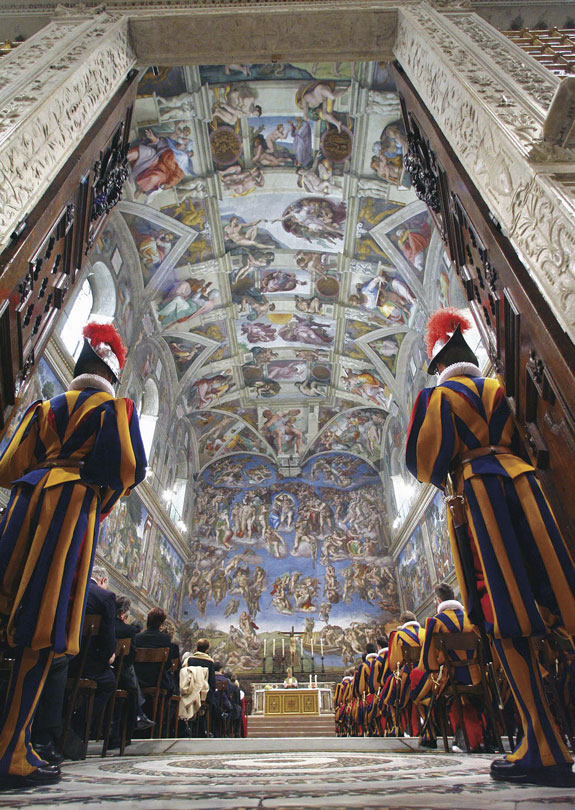by Judith Harris

VATICAN CITY (CNS) – The “Francis effect” has spilled over into the Sistine Chapel, bringing a surge in visitors but also increasing risks to maintenance of what Antonio Paolucci, director of the Vatican Museums, calls “the world’s chapel.”
Prior to a 14-year restoration, completed in 1994, visitors to the chapel numbered about 1.5 million annually. That rose to more than 5 million in 2011. Since the March, 2013 election of Pope Francis, whose weekly public audiences and readings of the Angelus have boosted turnout in St. Peter’s Square, the number of chapel visitors is up to 5.5 million, or 20,000 per day and 30,000 on the last Sunday of every month, when admission is free.
Every 20 minutes, a group of almost 700 people is let into the room, which measures less than 6,000 square feet.
So many visitors not only make the viewing experience less pleasant, they bring in perspiration and bacteria that threaten the survival of masterpieces by Ghirlandaio, Botticelli, Pinturicchio, Perugino and, most famously, Michelangelo.
Train Station-like Crowding
Recent accounts in the Italian press have complained that the chapel is “as crowded as a train station” and warned that a “wall” of human breath threatens “unimaginable disaster” for the 12,000 square feet of painted surfaces. As one headline put it, “The enemy is you.” Paolucci himself wrote in the Vatican newspaper that the chapel “risks being a victim of its own success.”
The problems are aggravated by the late-15th-century chapel’s peculiar design, which resembles that of a fortress, possibly reflecting the defensive architecture of Avignon, France, during an earlier period of papal exile there. The chapel has no exterior entrance and is entered solely through the Apostolic Palace; its high windows are permanently closed and abut an interior balcony called, in medieval style, a “patrol corridor.”
All this keeps the exchange of air to a minimum, accentuating the effects of pollution, including wind-borne car exhaust and dust, and of exterior humidity and abrupt changes in temperature.
One remedy would be to reduce the number of visitors, but Paolucci has opposed this, insisting the faithful have a right to see the room where cardinals have elected new popes for more than five centuries.
The present air-conditioning system, installed in the mid-1990s, was designed for only half the current number of visitors, so the Vatican is installing a powerful new system slated to be operative in October.
That is not the only new technology being introduced to assist in conservation.
To reduce the risk of heat damage from illumination, the Vatican is installing an advanced LED lighting system that, according to its manufacturer, will also slash energy consumption by 60 to 80 percent. The previous halogen lamps, installed in the 1980s, used 90 percent of the energy for heat and only 10 percent for light.
